We are pleased to share this week’s blog from OPA Master artist Albert Handell. Albert will be giving a live demonstration at the upcoming OPA National Convention in Santa Fe, NM, August 24-29, 2021. Tickets and more information are available through the OPA website.
As a sought-after workshop instructor, Albert is accustomed to answering student’s questions. For this week’s blog, we share his response to two commonly asked questions:
Question: When do you know when your painting is finished?
Answer: When I do not wish to paint on it any more. However, my advice to my students is to see the big picture…
My students seem not to understand the importance of carrying power. How a painting reads from a distance is much more important than the way its details look up close.
I have noticed that the aspiring artists who work with me are glued to their canvases and hardly ever step back…they do not take into consideration how important carrying power is to their paintings. They do not take breaks to walk around and see what other people are painting. NO, NO! They are glued to their work, frantically trying to finish.
Let’s look at what happens in the process of creating a painting.
Perhaps your subject includes a distant mountain with a field in front, and a little house somewhere in the background. What a large amount of space you are tackling!
You are placing all of this on a 16” x 20” surface which means you are condensing it quite a lot. Also, you are standing and working at arm’s-length from your surface to create a painting that is meant to be seen from 15 feet away.
All this takes a lot of visual adjusting. I wish students would get into the habit of stepping back from time to time SO THEY CAN ASSESS THEIR PAINTING. They cannot get a fresh look at things if they constantly stay and paint only at arms-length. They cannot correctly analyze the strengths and weaknesses of their work, so they very easily end up noodling the paint in a frantic attempt to finish.
If they lose sight of the carrying power of what they are creating, they are in trouble without knowing it and cannot satisfactorily complete the piece.
Every good painting must read from a distance to be a finished work of art. My advice for everyone: do the best you can and do not worry about completing your painting in one session. When your work time is over, simply turn your painting to the wall. The next day, or whenever you come back to it, do not look at the painting as you turn it around. Take a few steps away and then turn around and look. If you have a good instant reaction, the painting could be finished…or it might need a little tweaking. Make sure you do not over work, for if you do, you will weaken the painting.
Question: You have said that when oil painting, you prefer using a combination of transparently applied and opaquely applied oils to achieve textual beauty. Please explain.
Answer: I will answer this question by giving a few visual examples.
First, let’s take a look at the painting Deep Shadows. You can clearly see the transparent application of paint which gives it the atmosphere that is so important in almost all of my paintings. In Deep Shadows I let the opaque flutter of leaves rhythmically stand out and complement the solidity of the massive tree trunk.
Next, let’s look at the painting Wind Swept where this technique is more subtle. I began painting it by establishing the sky and the rest of the scene transparently and smoothly without any brush marks using Windsor Newton’s Liquin as the medium.
Then I painted the tree, landscape and earth with a combination of transparent and comparatively opaque application of paint and brush work. My aim was to delicately show the contrast between the sky and the tree.
Now let’s look at Chamisa. Here is a robust example of using transparent oils with opaque brush work. The lower right-hand part of the painting is transparent so that the opaque application of yellow chamisa and other colors will stand out in contrast. The opaque, vivid chamisa and a few of the façades of the building attract the viewer’s attention and come forward. The background mountain, which has a blue-grey atmospheric quality was applied transparently so that it would recede. The sky is also mostly painted with transparent applications of paint with a few touches of opaque paint here and there, again to keep the sky in the background.
In Invitation to Spring the transparency and contrasting opacity is quite obvious.
When I was at the Art Students League in New York, I remember engaging in endless discussions in the lunch room about art and about when a painting is finished. Somebody said, and I could not get it out of my mind “A beautiful painting has an inner light all its own.” As you can see, I never forgot that idea. I have always leaned towards transparent paint, doing so was part of my nature from the very beginning. I also have always liked textural contrasts. I believe using and combing transparent and opaque passages in a painting help me achieve the inner light I desire in my work.
Stay tuned for more questions and answers with Albert Handell OPAM, coming this summer on the Oil Painters of America Blog.
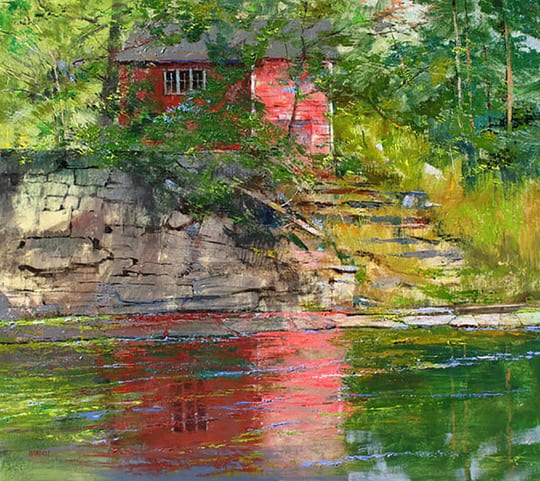
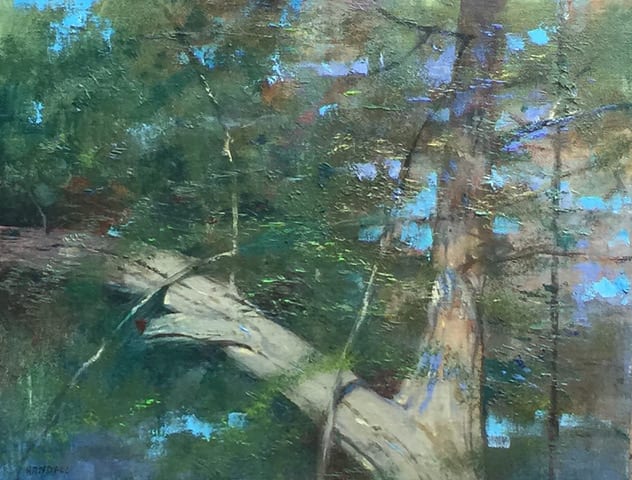
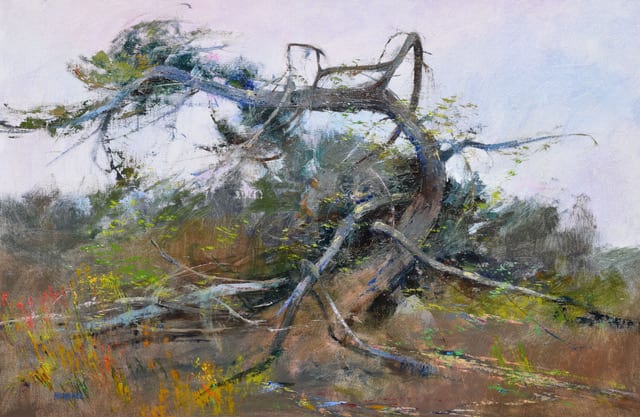
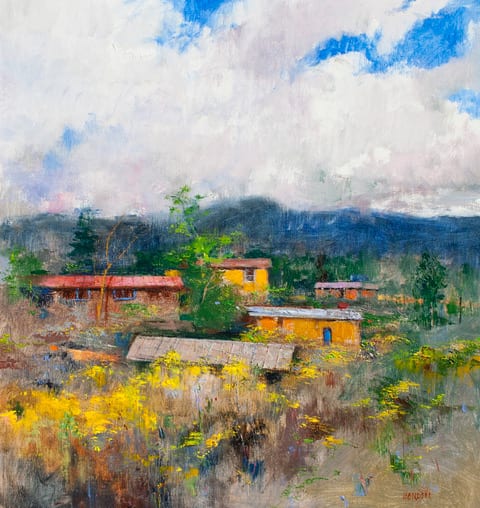
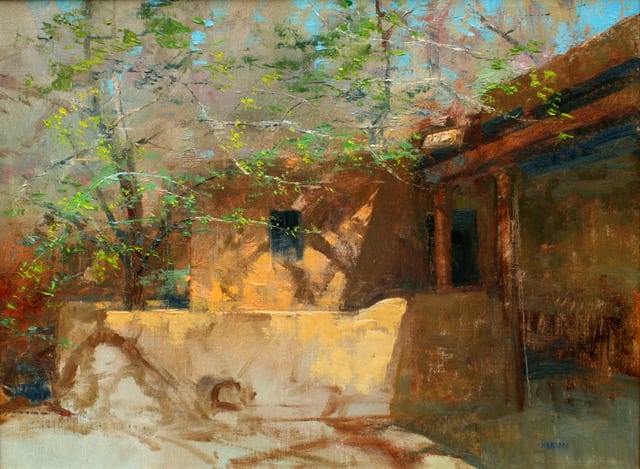
Shirley Akers says
Hello Mr. Handell,
First of all I’d like to sincerely thank you for sharing your experience, strength and hope to so many people around the globe. I first saw you on one of Streamline Publishing videos that Eric Rhoads started during the covid-19 times. I’ve been painting for a number of years but have never taken any first class painting classes more than a few workshops via local art instructors and a ton of study at the local library and brush mileage since 1976. I’ve taken all of Eric’s virutual workshops and in January, 2023 will take WC live again. I painted at http://www.paintadirondacks.com in 2019 and that is where I heard about you from Mr. Rhoads. Just finishing Pastel Live I shared your video with a friend and fellow artist and sent her this e-mail blog link as think she will enjoy it. Thanks for your encouragement and love of art. xxoo. I have work at beauchampsart@cox,net but don’t have my own website, only *FB. PS…finally got to shake your hand in person at PACE22 this past May.
James Brakken says
Mr. Handell, I am a retired public school art teacher. I think I may have one of your early oils. It’s a village scene with a farmer behind a team of horses, pulling a wagon load of hay through a snowy village. There’s a large faded yellow house behind him, other people and livestock in the foreground and rolling mountains behind. The signature is “By Handell” and looks like others I’ve seen on printed in all caps on some of your other works. I’d like to know if it is yours or if it is a fake. Can you help me? I can send you a photo if you wish. Thank you and stay well. James Brakken, author & illustrator.